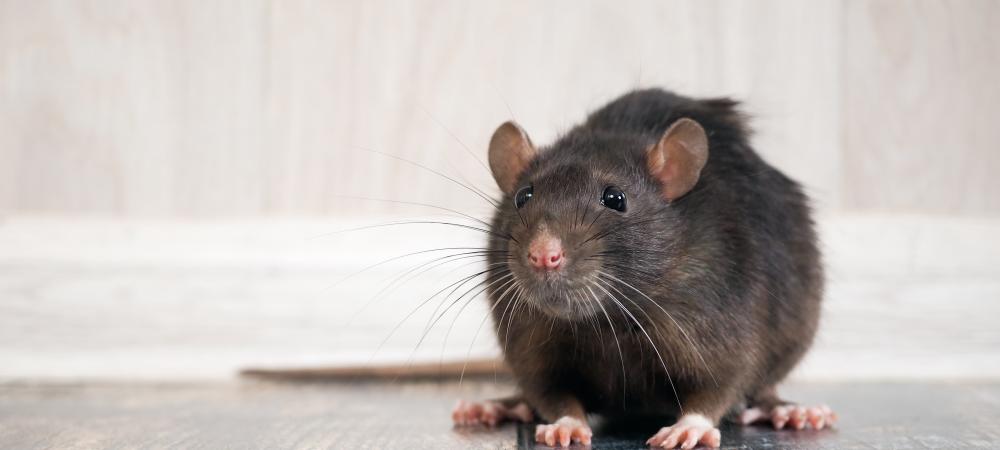Rodent Control in Historic Westchester Homes

Westchester County, NY, is home to some of the most beautiful and historic properties in the country. These homes, steeped in charm and character, tell a story of centuries past. However, their age and unique architectural features can also make them prime targets for rodent infestations. If you’re a homeowner in Westchester County, understanding why older homes are more susceptible to rodents and how to protect your property is crucial.
Why Are Historic Westchester Homes More Vulnerable to Rodents?
Rodents are attracted to homes for a variety of reasons. However, the historic houses in Westchester County have additional unique vulnerabilities to consider, making proactive rodent control an essential part of maintaining the home. Recognizing the risks is the first step in protecting your property from infestations.
Aged Foundations and Structural Gaps
Many older homes were constructed with materials and techniques that, while durable, may have deteriorated over time. Cracks in foundations, gaps around windows and doors, and weakened roofs create easy entry points for rodents such as mice and rats. Even a hole as small as a dime can allow a mouse to slip through. Over the years, natural wear and tear from weather, settling, and lack of modern reinforcements can exacerbate these vulnerabilities.
Complex Architecture
The intricate designs and multiple layers of historic homes—attics, basements, crawl spaces, and hidden voids in walls—create perfect nesting spots for rodents. These spaces provide warmth, safety, and proximity to food sources. Additionally, many historic homes have chimneys or outdated ventilation systems, which can serve as hidden highways for rodents to move throughout the structure. Find the four most popular rodent hot spots in your home.
Outdated Plumbing and Ventilation
Older plumbing systems and vents may have openings that allow rodents to travel freely. Sewer rats, in particular, can exploit outdated or damaged pipes to enter homes. These older systems, while historically accurate, often lack the rodent-proof features of modern materials, making it easier for pests to establish themselves.
Natural Building Materials
Many historic homes feature natural building materials such as wood, plaster, and brick. Rodents are notorious for gnawing on wood and other soft materials to create entryways or nests. Additionally, older insulation materials, like horsehair or straw composites, can be particularly attractive to rodents for nesting purposes.
Proximity to Nature
Westchester’s lush landscapes, wooded areas, and stone walls add to the charm of historic homes but also serve as ideal habitats for rodents. The proximity to natural habitats increases the likelihood of these pests seeking refuge indoors, especially during colder months. Older homes often have larger lots with gardens, sheds, or compost areas that can inadvertently attract rodents looking for food and shelter.
Signs of a Rodent Infestation in Your Historic Home
Recognizing the signs of a rodent infestation early is key to preventing a minor issue from becoming a major problem. Here’s what to look for in your historic Westchester home:
- Droppings: Rodent droppings are one of the most obvious signs of an infestation. You’ll often find these small, pellet-shaped droppings in areas where food is stored, such as kitchens and pantries, or in hidden spaces like basements, attics, and under furniture. Fresh droppings are dark and moist, while older ones are dry and brittle. Their presence indicates active rodent activity.
- Gnawed Materials: Rodents need to chew constantly to keep their teeth from growing too long. This behavior can result in gnawed wood, wiring, insulation, and even stored belongings. In historic homes, this is particularly concerning as it can damage structural elements and lead to fire hazards if electrical wires are compromised.
- Scratching or Scurrying Noises: Hearing unusual noises, especially at night, can be a telltale sign of rodents. These sounds often come from walls, ceilings, or attics as rodents move through your home in search of food or nesting materials. The quiet of historic homes without modern insulation often amplifies these noises.
- Foul Odors: A persistent musty smell in certain areas of your home can indicate rodent activity. This odor often comes from urine, droppings, or dead rodents. It can permeate the air in basements, crawl spaces, or hidden areas where rodents have nested.
- Grease Marks and Tracks: Rodents tend to follow the same paths repeatedly, leaving behind greasy smudges or dirt marks along walls, baseboards, or floors. You may also notice small footprints in dusty areas, particularly in basements or attics.
- Nests and Shredded Materials: Rodents create nests from shredded materials such as paper, fabric, or insulation. In older homes with abundant hiding places, these nests are often tucked away in attics, crawl spaces, or behind walls. Finding these materials in unusual places is a clear sign of an infestation.
- Unusual Pet Behavior: If you have pets, pay attention to their behavior. Dogs or cats may become fixated on certain areas of your home, such as walls or under furniture, where they can hear or smell rodents.
- Visible Rodents: While rodents are typically nocturnal and shy, spotting one in your home during the day is a sign of a significant infestation. Daytime sightings often mean the population has grown large enough to force some out of hiding during unusual hours.
If you notice any of these signs, it’s crucial to take action immediately. Rodents reproduce quickly, and even a small infestation can escalate into a serious issue, causing damage to your historic home and posing health risks to your family. Learn how to identify the most common types of rodents in NY and figure out why you might have rodents.
Effective Rodent Control Strategies for Older Homes
Controlling rodent populations in historic Westchester homes requires a thoughtful, thorough approach. These homes often have unique features—such as age, complex architecture, and proximity to nature—that make them more vulnerable to infestations. Professionals use a combination of proactive strategies that is crucial for long-term rodent control. Here are the most effective rodent control strategies tailored to older homes:
1. Seal All Entry Points
One of the first steps in rodent control is preventing access to your home. Older homes, especially historic properties, often have small cracks, gaps, and deteriorating materials that make it easier for rodents to slip inside. While the charming architecture may be beautiful, these features can create opportunities for pests to gain entry.
Why it works: Sealing these openings will prevent rodents from entering your home and creating new hiding spots inside.
2. Eliminate Food Sources
Rodents are resourceful creatures that will seek out food whenever they can find it. Historic homes with large kitchens, basements, or even attics may contain food sources that attract rodents. Addressing these food sources is essential for rodent control.
Why it works: Rodents will leave your home in search of easier food sources if theirs is consistently unavailable.
3. Maintain Structural Integrity
The structure of older homes can become compromised over time, leaving weak points that rodents can exploit. Failing to address these areas can make your home a perfect nesting spot for rats and mice.
Why it works: By repairing structural vulnerabilities and maintaining the integrity of your home, you limit opportunities for rodents to nest and move around undetected.
4. Use Rodent-Proofing Landscaping
The exterior of your historic home is just as important as the interior when it comes to rodent control. Overgrown bushes, trees, and other landscaping features can provide easy access to your home for rodents. In Westchester County, where wooded areas and stone walls are common, these features may attract rodents seeking shelter.
Why it works: Proper landscaping and outdoor maintenance remove potential rodent habitats and pathways, keeping rodents at bay.
5. Regular Assessments and Monitoring
Rodent infestations can quickly escalate if left unchecked. Since older homes have many hiding places, it’s essential to regularly monitor and assess your property for signs of rodents, especially during the colder months when pests are more likely to seek shelter indoors.
Why it works: Regular assessments and monitoring ensure that you catch any potential rodent activity early before it becomes a more serious issue.
Protecting Your Historic Home from Rodents
Rodent control in historic homes in Westchester County requires a comprehensive approach, and tackling it on your own can be challenging. Sealing entry points, eliminating food sources, maintaining your home’s structure, and using eco-friendly methods are important steps, but professional intervention is often the most effective solution.
At Suburban Pest Control, we specialize in rodent control, exclusion, and prevention services tailored to the unique needs of older homes. Our expert team can identify potential entry points and seal them securely to keep rodents out.
Don't wait for a small problem to turn into a major issue. Contact Suburban Pest Control today to schedule an assessment and ensure your historic Westchester home remains safe, comfortable, and rodent-free. With our professional expertise, you can enjoy peace of mind knowing that your home is protected from rodents and the damage they can cause.
